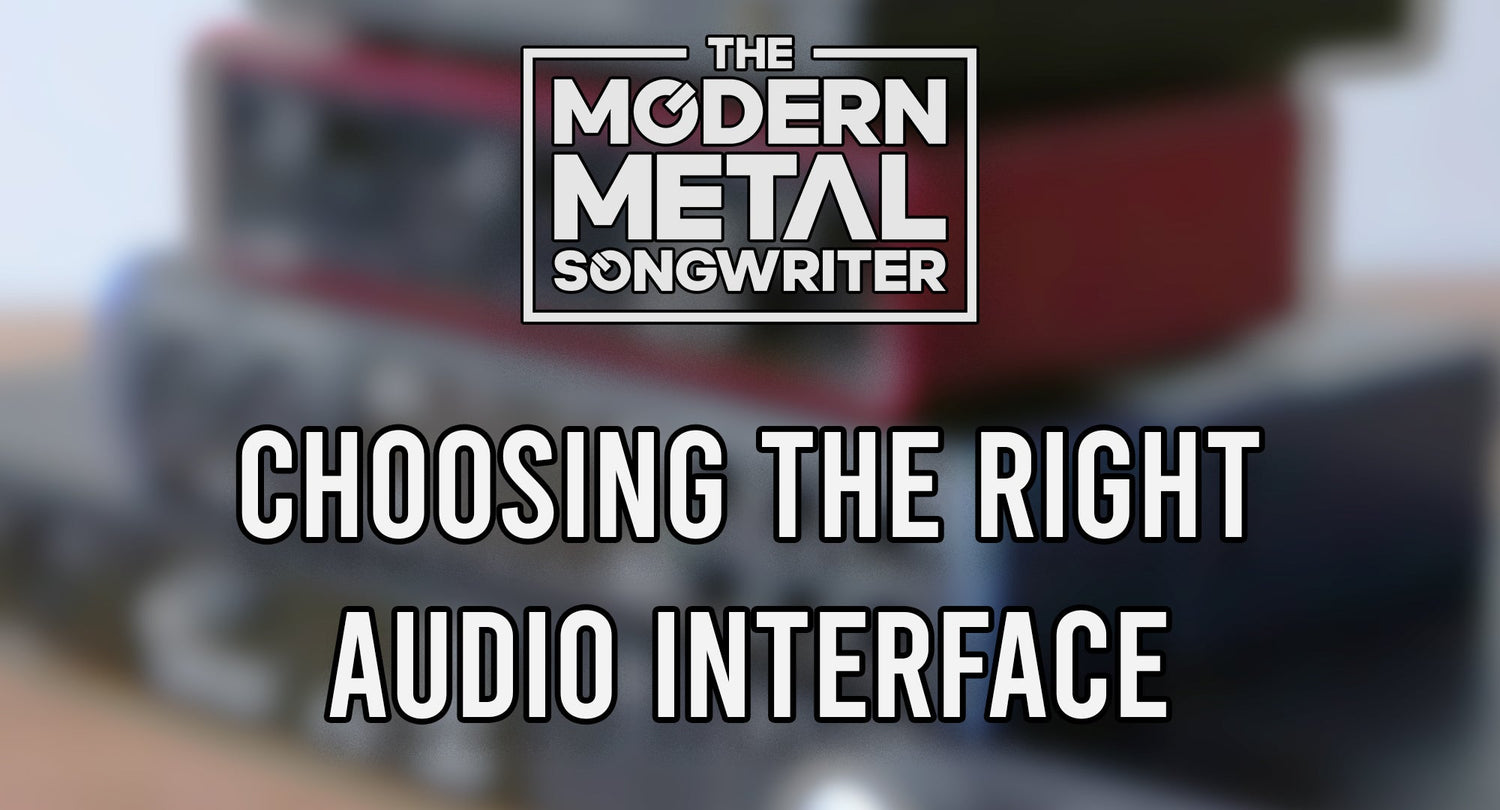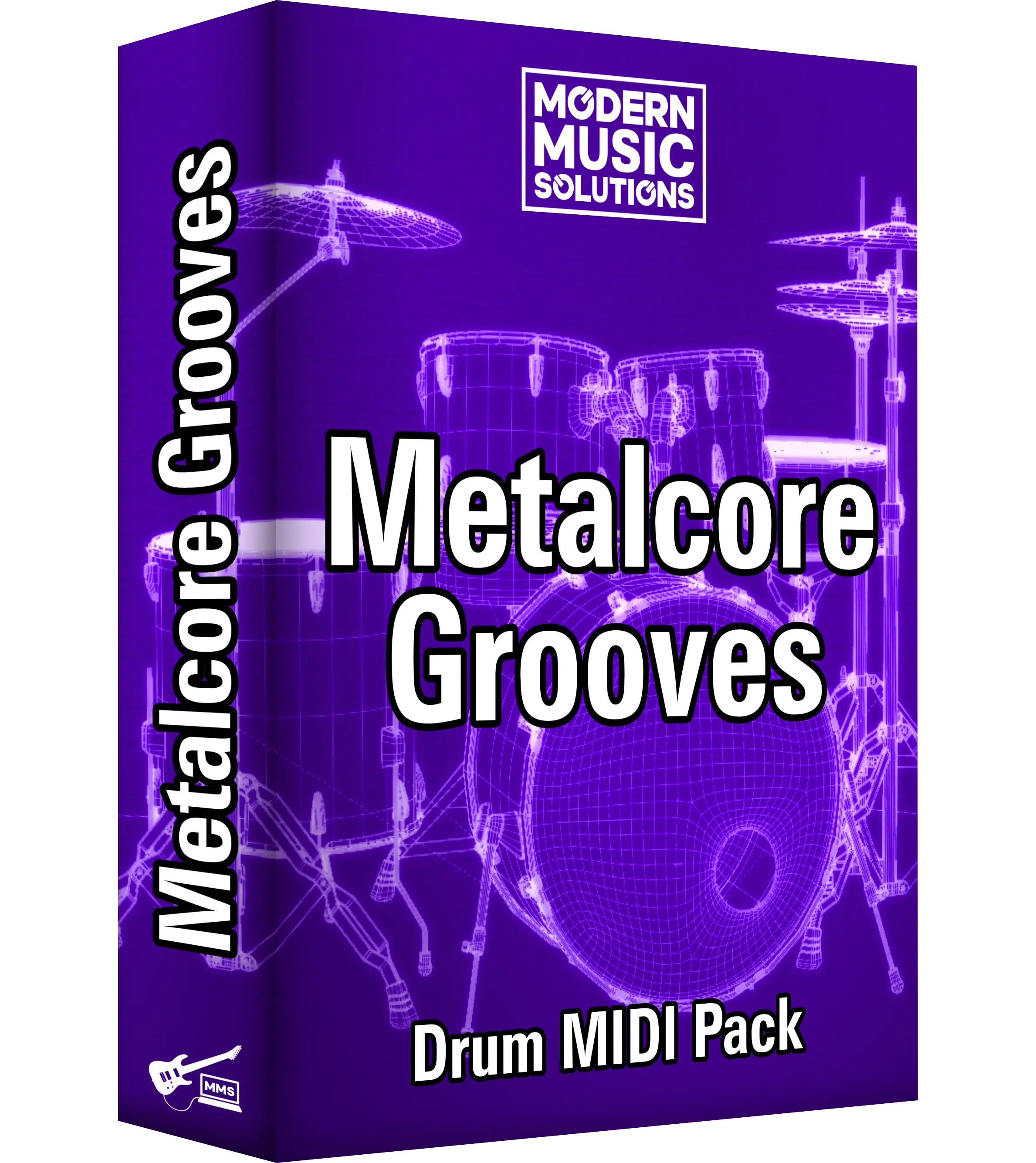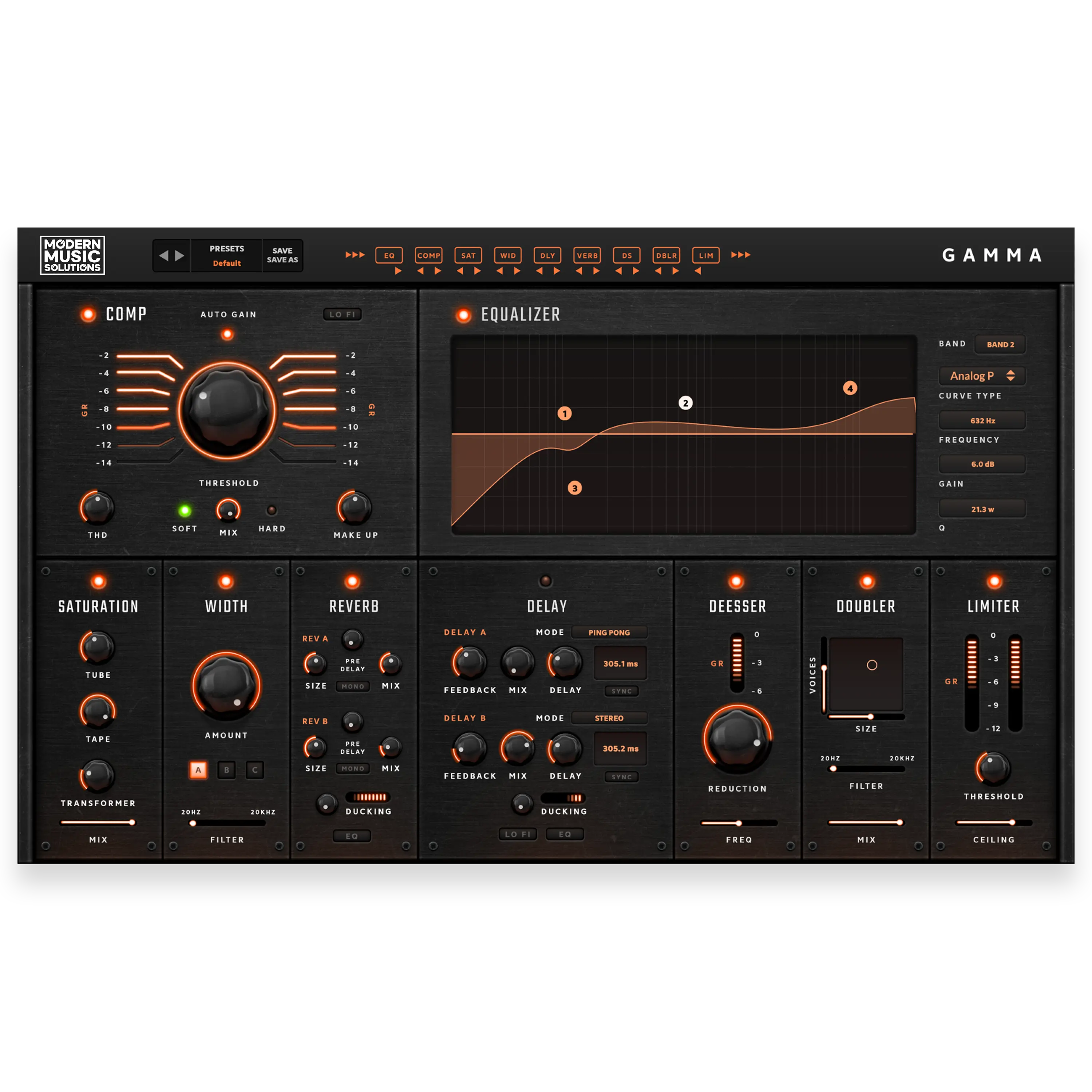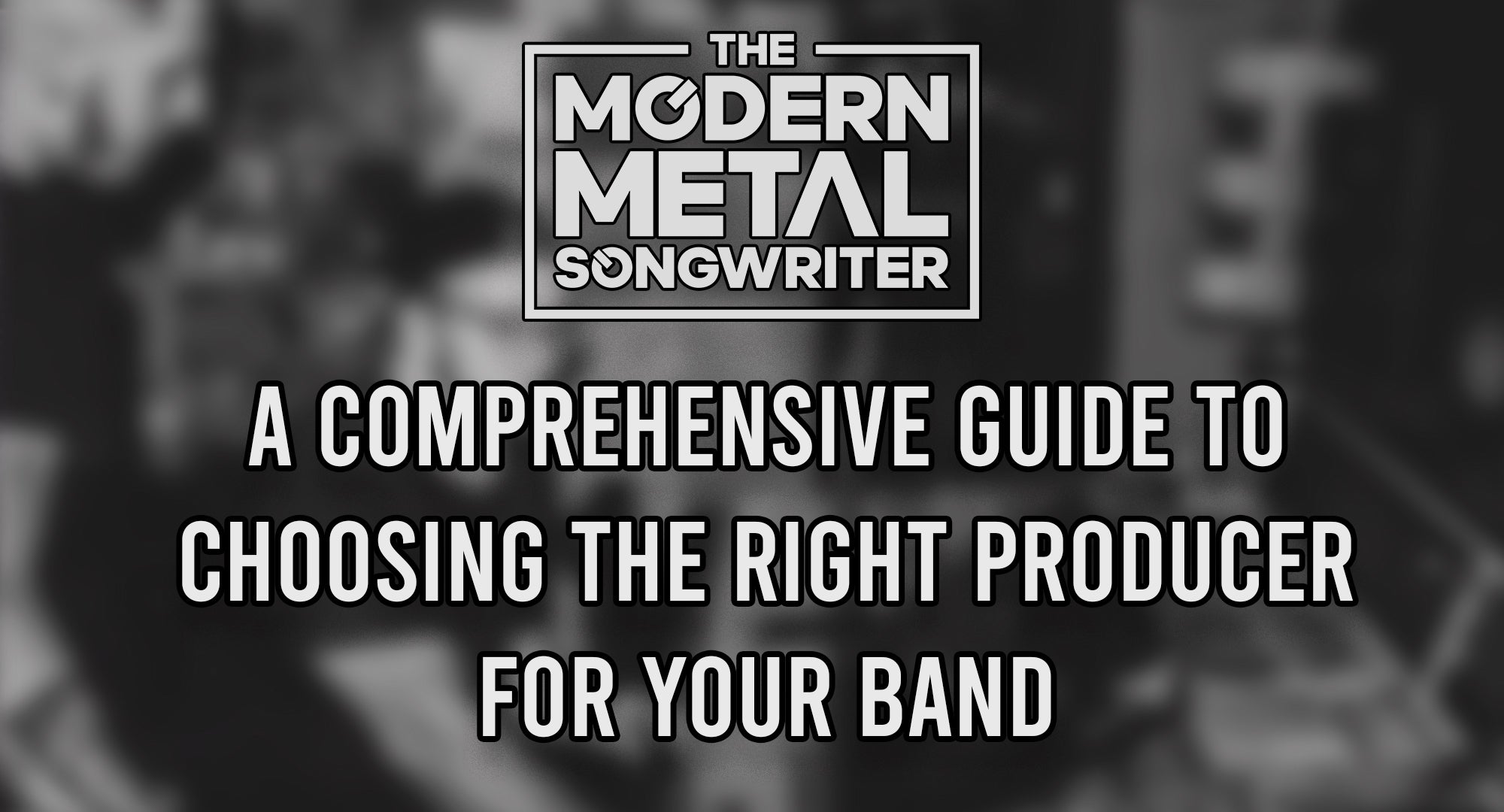If you're a rock or metal musician looking to record at home, a good audio interface is essential for capturing your music. It's the device that connects your instruments and microphones to your computer and ensures that the sound is captured accurately and represents your playing/vocals in the best way possible.
But with so many options on the market, how do you know which one to buy?
In this article, we'll discuss the best interfaces for rock and metal home recording, with options for every budget. We'll also answer some common questions about audio interfaces and explain why they're important. Whether you're a beginner guitarist or an audio engineer looking for a pro option, there's an interface on this list that will suit your needs. So let's get started!

How to Choose an Audio Interface For Home Recording
Before we dive into specific interfaces, it's important to understand what factors to consider when choosing an interface. Here are some of the most important things to keep in mind:
- Number and type of inputs: How many instruments or microphones do you need to record at once? Do you need XLR inputs for microphones or just 1/4" inputs for guitars and basses? Ensure the interface you choose has enough inputs and the right type for your needs. Also, be sure to consider the future of upgrades, as some interfaces will allow for adding more inputs, and some will not.
- Sample rate and bit depth: These specs determine the quality of the audio recorded by the interface. Higher sample rates and bit depths result in better sound quality, but also larger file sizes and more processing power required from your computer. Consider what level of quality you need and whether your computer can handle it. In most cases, most interfaces will handle all of what you need for home recording and they can all record at the standard sample rates you'd expect.
- Connectivity and compatibility: Make sure the interface is compatible with your computer's operating system and has the connectivity options you need. Do you want USB or Thunderbolt connectivity? Will you be using the interface with a laptop or desktop computer? Be sure to get an interface that can connect to your computer with ease. Windows user? You might want to pay EXTRA attention to the interface you get as some companies drivers are particularly bad on Windows systems and will leave you with headaches trying to record low latency.
- Price: Of course, budget is always a consideration. Decide on a budget before you start shopping and look for interfaces that fit within that budget.

By considering these factors, you can narrow down your options and find an interface that meets your specific needs.
Budget-Friendly Options (Under $100)
If you're on a super tight budget, there are still plenty of great options for audio interfaces. Here are four budget-friendly options that offer good performance and features UNDER $100:
Focusrite Scarlett Solo - This USB interface is a popular choice for beginners and those on a budget. It has one XLR input for a microphone and one 1/4" input for a guitar or bass. It also includes a headphone output and direct monitoring.

Behringer U-Phoria UM2 - Another affordable USB interface, the UM2 has one XLR input and one 1/4" input, as well as a headphone output and direct monitoring. It also comes with a free copy of Tracktion DAW software.

M-Audio M-Track Solo - This interface has one XLR input and one 1/4" input, plus a headphone output and direct monitoring. It also includes a copy of Pro Tools First software.

Presonus AudioBox USB 96 - The AudioBox has two combo inputs that can handle XLR or 1/4" inputs, as well as a headphone output and direct monitoring. It also includes a copy of Studio One Artist software.

These interfaces are all under $100 and offer decent performance and features for the price. While they may not have all the bells and whistles of higher-end interfaces, they are a great starting point for beginners or those trying to decide if home recording is for them. We highly recommend saving up for our next tier though if you plan to home record your own music, as the options get extremely competitive the next round up.
Mid-Tier Interfaces
If you have a bit more to spend on an interface, you can upgrade to a mid-tier model that offers more inputs and outputs, higher sample rates and bit depths, and better quality preamps, and more.
Here are four mid-tier interfaces to consider:
Audient ID Line (ID14, ID24, ID48) - From the ID4, to the massive big brother ID44, Audient has some great options for all of your recording needs. Each of their interfaces also give you the option to add up to 8 inputs for each ADAT input (The ID44 allowing up to 16 additional inputs). All of the Audient ID interfaces are equipped with Class-A mic preamps, a JFET DI input for guitar and bass, and a 1/4" headphone outputs. The MKii versions connect via USB-C and support a maximum sample rate of 96kHz at 24-bit depth, which is more than you'll EVER need in a home studio setup. It also includes the ScrollControl feature, which allows you to adjust parameters in your DAW with the knob on the interface, which is a cool touch!

Universal Audio Volt Interfaces - The Universal Audio Volt line is a new line of interfaces really bringing some heat to the space! Like most brands, they have a super affordable one channel version, as well as some more full featured options as the prices go up!
In this line, the standouts are the Volt 276 and the Volt 476. These interfaces are a really unique option as they are one of the only interfaces on the market featuring *actual* analog compression on the inputs! If you're recording vocals (or maybe even bass) often, this is definitely a cool feature to look into!

SSL2+ - The SSL2+ is equipped with high-quality preamplifiers, top-notch 24-bit/192 kHz digital-to-analog converters, and a wide range of connection options. These include four line-out ports, dual headphone outputs available on both the front and rear panels, and the ability to manage two different stereo mixes. It also features 5-pin DIN MIDI input and output.
The special 4K Legacy mode lets you infuse your tracks with the distinctive sound of SSL 4000 series analog mixing desks at the touch of a button. Additionally, the device comes with a comprehensive software package to help you start recording right away. Those who live stream will find the integrated loopback feature valuable for blending voice and other audio elements before broadcasting! This is a great feature to have at this budget range.

Professional-Grade Options
If you're a professional musician or producer looking for higher-quality audio interfaces, there are plenty of options to choose from at this higher budget. These interfaces offer some of the best converters, preamps, and connectivity options, but they also come with a higher price tag.
Here are some "professional-grade" options to consider:
RME Babyface Pro FS - This USB interface has two XLR/TRS combo inputs, two line outputs, and a headphone output. It also features RME's SteadyClock FS technology for jitter-free clocking and ultra-low latency performance. If you're a Windows user, RME is known for having some of the most rock-solid drivers in the game.

Antelope Audio Zen Tour Synergy Core - The Zen Tour Synergy Core is a USB-C interface with four XLR/TRS combo inputs, four line outputs, and a headphone output. It also features Antelope's FPGA-based DSP processing for running plugins in real time, which is great for latency free tracking while monitoring FX.

Apogee Symphony Desktop - This Thunderbolt interface has two XLR/TRS combo inputs, two line outputs, and a headphone output. It also features Apogee's Symphony I/O Mk II mic preamps and converters for exceptional sound quality.

These professional-grade interfaces can cost well over $1,000, but they offer unparalleled sound quality and processing power built in. They're a good choice for serious musicians and producers who demand the best performance and sound quality from their equipment.
NOTE: There are much more expensive interfaces/converters/preamps (you name it) available for commercial uses, but this article is focused on songwriters and musicians NOT large commercial studios demanding huge setups.
Does it Matter What Audio Interface You Use?
When it comes to home recording in the rock/metal genre, choosing the right audio interface can make all the difference. But does it really matter what interface you use?
In short, yes. The audio interface is a crucial component of the recording process and can greatly affect the final product. However, if you’re just trying to write demos - the interface is not *that* important. All that really matters is you can get the sound of your head into the computer. Most modern budget interfaces can achieve this.
The main issue with choosing the *wrong* interface is when it leads to you debugging issues, or dealing with latency when you're at your most creative times, and leading you to lose your inspiration.

How the Interface Affects the Recording Process and Final Product
The audio interface is responsible for converting the analog signal of your guitar or other instruments into digital data that can be processed by your computer's software. The quality of the interface's analog-to-digital converter (ADC) can have a significant impact on the overall sound quality of your recordings.
In addition to the quality of the ADC, other factors such as the interface's preamps, inputs and outputs, and overall build quality can also play a role in the recording process and the final product. A high-quality interface with high-end components can produce a more accurate and detailed sound, while a lower-end interface may result in a more compressed and less dynamic sound. Keep in mind, most modern interfaces do an amazing job and are leaps ahead of the recording technology available 5 -10 years ago at these prices.
How Much Should I Pay for an Audio Interface?
The price range for audio interfaces can vary greatly depending on the quality and features offered. For those on a budget, there are plenty of options available in the sub-$200 range. These interfaces may have fewer inputs and outputs and lower-end components, but can still produce good-quality recordings.
For a mid-tier interface with more features and higher-end components, you can expect to pay anywhere from $200-$600. These interfaces may offer more inputs and outputs, higher-quality preamps, and better overall sound quality.

If you're willing to invest in a high-end interface, you can expect to pay upwards of $1000 or more. These interfaces often have top-of-the-line components, advanced features, and pristine sound quality.
While investing in a higher-end interface may seem like a large expense, it can be worth it for those who are serious about recording and want the best possible sound quality.
Our Recommendation: Audient ID14 MK2
We highly recommend the Audient ID14 MK2 as the best option for home recording in the rock/metal genre. This interface offers an impressive combination of high-quality preamps and converters, making it perfect for capturing the nuances of guitar recordings. It's user-friendly interface and robust build quality make it a popular choice among both beginners and professionals.
Additionally, it comes with a range of useful features such as a JFET DI input and dual headphone outputs, making it an excellent investment for any home studio setup. Overall, the Audient ID14 MK2 offers exceptional value for its price point and is a reliable and versatile choice for rock and metal musicians.

Conclusion
When it comes to home recording, a good audio interface is essential for capturing high-quality sound. By considering your needs and budget, you can find an interface that fits your specific requirements. Whether you're a beginner on a tight budget or a professional looking for the highest quality, there's an interface out there for you. We hope this article has helped narrow down your ideas of what to get. Enjoy, and Happy Songwriting!







